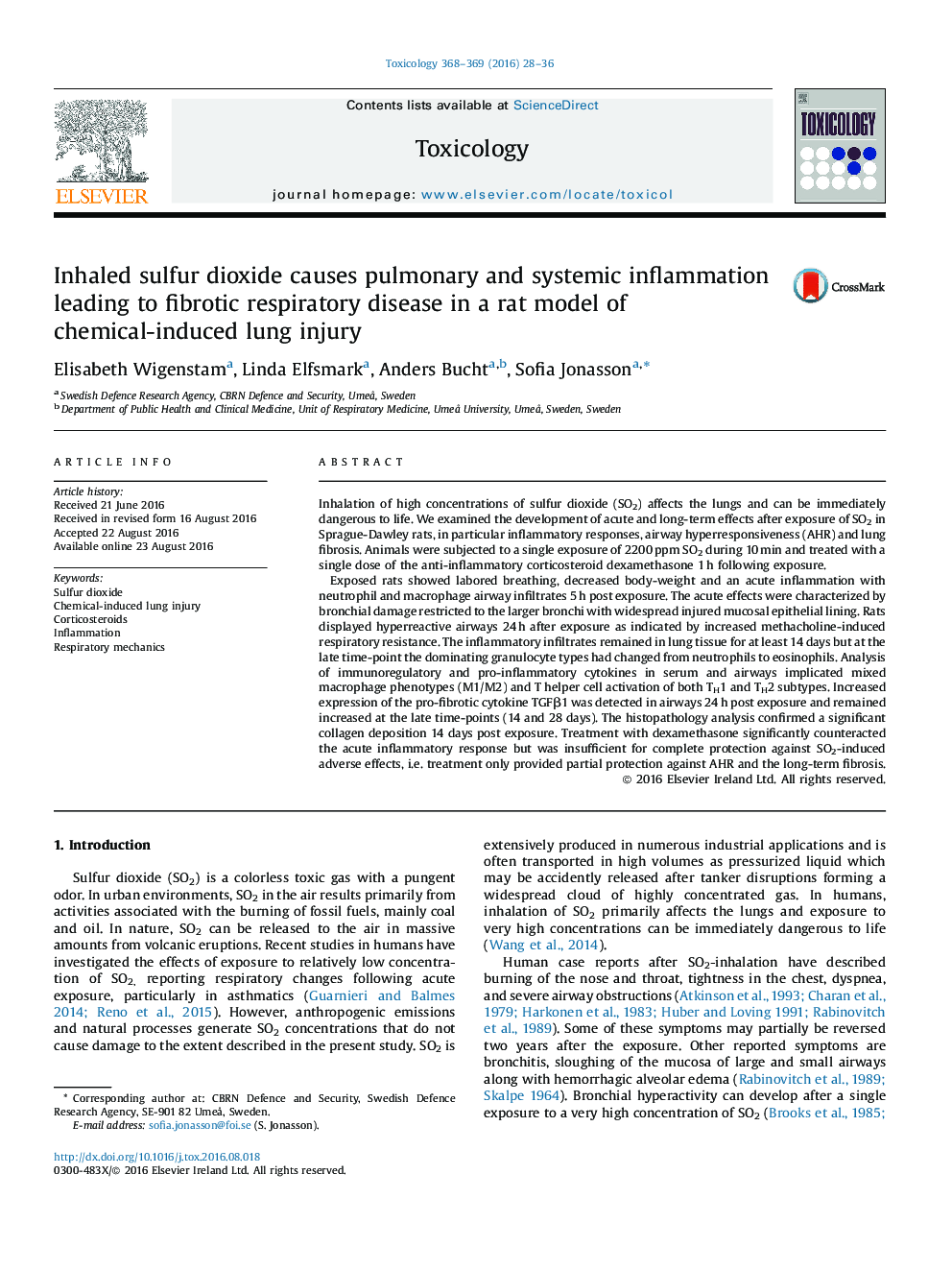| کد مقاله | کد نشریه | سال انتشار | مقاله انگلیسی | نسخه تمام متن |
|---|---|---|---|---|
| 5561968 | 1562303 | 2016 | 9 صفحه PDF | دانلود رایگان |
- Inhalation of SO2 leads to acute lung inflammation and airway hyperreactivity.
- SO2 induce a long-term inflammation dominated by macrophages and eosinophils.
- SO2 leads to a fibrotic respiratory disease.
- Corticosteroid-treatment did not completely protect against the pulmonary toxicity.
Inhalation of high concentrations of sulfur dioxide (SO2) affects the lungs and can be immediately dangerous to life. We examined the development of acute and long-term effects after exposure of SO2 in Sprague-Dawley rats, in particular inflammatory responses, airway hyperresponsiveness (AHR) and lung fibrosis. Animals were subjected to a single exposure of 2200 ppm SO2 during 10 min and treated with a single dose of the anti-inflammatory corticosteroid dexamethasone 1 h following exposure.Exposed rats showed labored breathing, decreased body-weight and an acute inflammation with neutrophil and macrophage airway infiltrates 5 h post exposure. The acute effects were characterized by bronchial damage restricted to the larger bronchi with widespread injured mucosal epithelial lining. Rats displayed hyperreactive airways 24 h after exposure as indicated by increased methacholine-induced respiratory resistance. The inflammatory infiltrates remained in lung tissue for at least 14 days but at the late time-point the dominating granulocyte types had changed from neutrophils to eosinophils. Analysis of immunoregulatory and pro-inflammatory cytokines in serum and airways implicated mixed macrophage phenotypes (M1/M2) and T helper cell activation of both TH1 and TH2 subtypes. Increased expression of the pro-fibrotic cytokine TGFβ1 was detected in airways 24 h post exposure and remained increased at the late time-points (14 and 28 days). The histopathology analysis confirmed a significant collagen deposition 14 days post exposure. Treatment with dexamethasone significantly counteracted the acute inflammatory response but was insufficient for complete protection against SO2-induced adverse effects, i.e. treatment only provided partial protection against AHR and the long-term fibrosis.
Journal: Toxicology - Volumes 368â369, 10 August 2016, Pages 28-36
